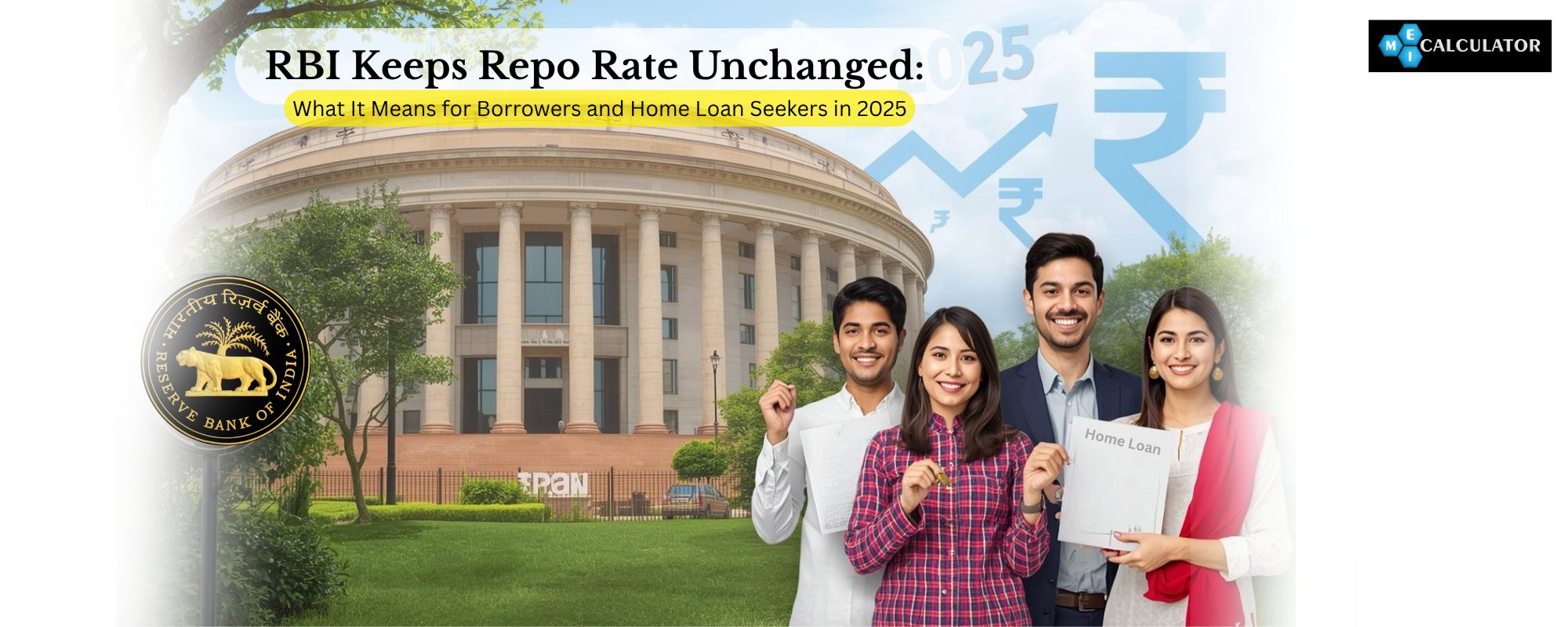
The Reserve Bank of India (RBI) recently announced that it will keep the repo rate unchanged at 5.5%, maintaining a balanced stance as India’s economy shows signs of stability. This decision, announced on October 6, 2025, reflects RBI’s confidence in moderating inflation and a promising GDP outlook.
According to the revised data, India’s GDP growth forecast for FY 2025–26 has increased to 6.8%, while inflation has been projected to ease to 2.6%. This steady monetary stance signals a healthy lending environment – good news for anyone planning to take a home loan, refinance an existing one, or invest in real estate.
When the RBI keeps the repo rate unchanged, the rate at which commercial banks borrow from the central bank remains stable. This means that lending rates for home loans, car loans, and personal loans are likely to stay the same.
For new borrowers, this ensures affordable EMIs and stable interest rates, while existing borrowers continue enjoying predictability in monthly payments.
If you’re planning to calculate how stable EMIs can impact your budget, you can use our EMI Calculator to get real-time repayment insights.
🏠 Steady EMIs
With no increase in repo rate, home loan EMIs remain consistent — allowing borrowers to plan long-term finances without worrying about rate hikes.
💡 Better Loan Offers
Many banks and NBFCs launch festive home loan offers around this time, including processing fee waivers and flexible tenure options.
🔒 Opportunity to Lock in Fixed Rates
If you’re on a floating rate, this period of stability may be the right time to switch to a fixed rate.
💸 Improved Credit Flow
The RBI’s parallel reforms – such as relaxed lending norms for infrastructure and IPO financing – could boost liquidity across financial markets, indirectly benefiting housing loans as well.
Along with the rate decision, the RBI introduced new measures to strengthen India’s financial ecosystem. These include:
Together, these reforms aim to stimulate investment and credit flow – indirectly supporting the real estate and home loan sectors.
A steady repo rate also signals confidence in India’s financial resilience. For the real estate industry, this could mean increased developer activity, new project launches, and stronger homebuyer sentiment – especially during the festive season.
✅ Better Deals and Offers
Banks and housing finance companies are likely to extend festive discounts and lower interest rates for new applicants.
✅ Faster Approvals
With more liquidity in the system, loan approvals could become quicker and smoother.
✅ Confidence in Planning
A steady repo rate ensures predictability, allowing borrowers to plan EMIs with greater confidence.
India’s financial outlook looks stable – controlled inflation, a growing GDP, and strong infrastructure spending all point toward a supportive lending climate.
However, global market fluctuations, oil prices, and currency movements could still influence RBI’s next move.
For now, the unchanged repo rate gives borrowers breathing space to make informed decisions – whether it’s buying a new home, refinancing an existing loan, or balancing their EMIs.
The RBI’s decision to keep the repo rate unchanged is a welcome sign for both borrowers and developers. It keeps EMIs affordable, maintains buyer confidence, and supports economic growth.
If you’re planning to buy a home, this is the ideal time to evaluate your loan options and check your affordability using tools like:
For more details on RBI’s monetary policy and economic updates, visit the Reserve Bank of India’s official site.